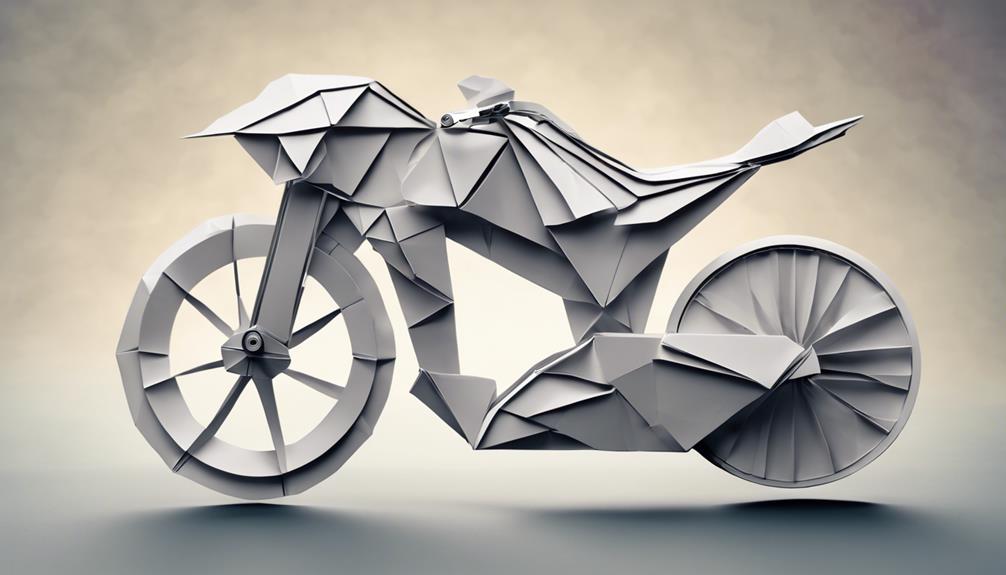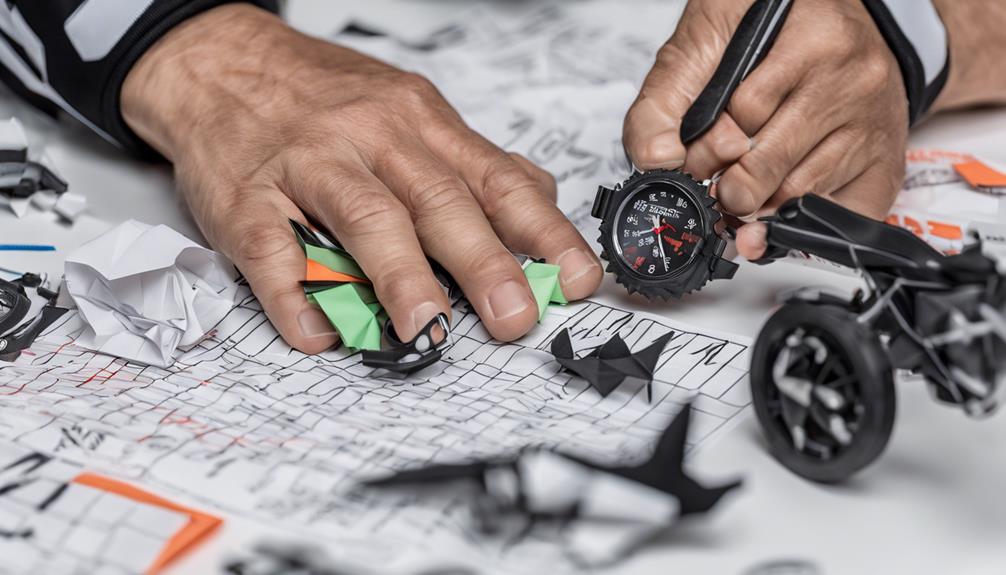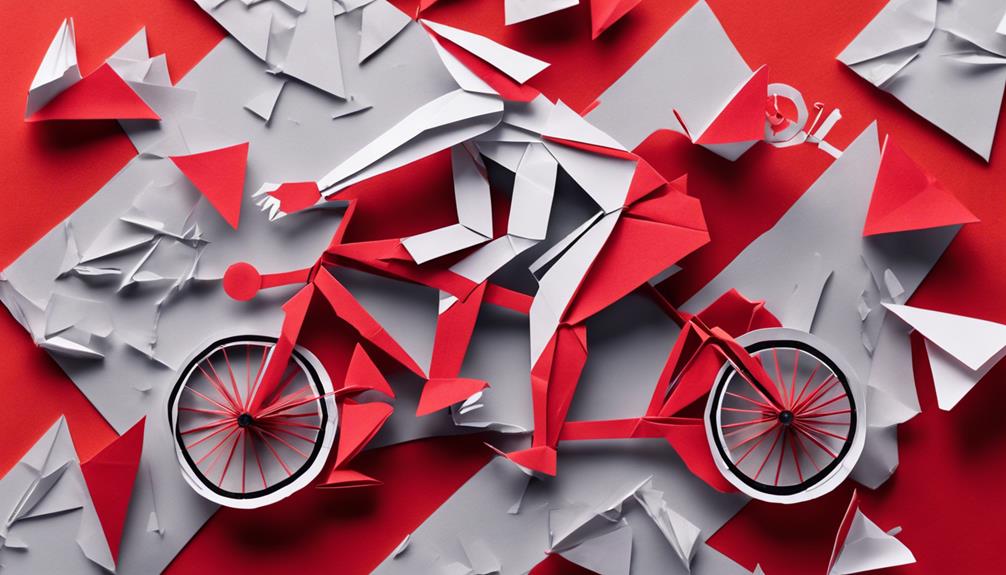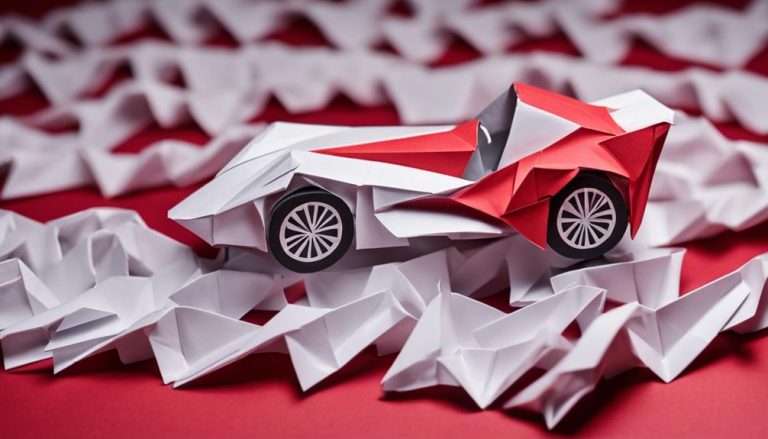General Rules of E Bike Racing
When you enter the world of e-bike racing, you'll need to know the rules. First, make sure you meet the age requirement of at least 16 years old and obtain a racing license. Your e-bike must meet technical specifications, including motor power and battery efficiency. On the course, follow signage and arrows, and pay attention to warnings about obstacles. Show respect to fellow riders, anticipating their actions and maintaining a safe distance. Your bike must pass inspection, and you'll need to familiarize yourself with safety checks and protocols. As you get started, remember that there's more to learn about e-bike racing – and it's just around the bend.
E-Bike Technical Specifications

When you're shopping for an e-bike, you'll want to evaluate the technical specifications that'll make a real difference in your racing performance. Two critical components to focus on are motor power and battery efficiency. Motor power, measured in watts, determines how fast you can accelerate and climb hills. Look for an e-bike with a motor that can deliver a high wattage output, especially if you're planning to tackle challenging terrain.
Battery efficiency, on the other hand, affects how far you can ride before needing to recharge. A battery with high efficiency will give you more miles per charge, reducing the need for frequent stops. Consider an e-bike with a high-capacity battery and advanced battery management system to guarantee peak performance. Don't settle for an e-bike that can't keep up with your racing ambitions. By prioritizing motor power and battery efficiency, you'll be able to ride faster, farther, and more efficiently – giving you a competitive edge in e-bike racing.
Rider Eligibility and Licensing
Before you can hit the racecourse, you'll need to verify you meet the eligibility criteria and obtain the necessary licenses to compete in e-bike racing. To provide a safe and fair competition, riders must meet specific requirements. One vital factor is the Rider Age. You must be at least 16 years old to participate in most e-bike races, although some events may have different age restrictions. Additionally, you'll need to obtain a racing license from the governing body or national cycling organization. The License Fees vary depending on the category and duration of the license. Typically, a one-day license costs around $10-$20, while an annual license can range from $50 to $200. Make sure to check the specific requirements and fees for the event you're interested in. Remember, having the right license is essential to participate in e-bike racing. Don't get left at the starting line – guarantee your participation by getting your license and get ready to ride!
Course Marking and Signage

As you approach the starting line, you'll notice a plethora of signs and markings guiding you through the course, each serving a specific purpose to facilitate a smooth and safe race. These course markings and signage are carefully designed to guarantee you're aware of upcoming obstacles, turns, and hazards. You'll see arrows indicating direction, warnings for steep drops or jumps, and signs highlighting course obstacles like rocks or tight corners.
Signage placement is critical, with signs positioned to provide ample warning and reaction time. You'll find signs at regular intervals, reminding you of speed limits, warning of impending obstacles, or indicating course changes. Pay attention to these signs, as they're essential for your safety and the safety of other riders.
Course obstacles, such as rocks or logs, will be clearly marked to help you navigate the terrain safely. Don't assume you can tackle an obstacle without checking the signage first – it's there to protect you and others around you. By following the course markings and signage, you'll be able to focus on your ride, enjoying the thrill of e-bike racing while staying safe and aware of your surroundings.
Start and Finish Procedures
You'll need to be in the designated start area at least 15 minutes prior to your scheduled start time, with your e-bike in ready-to-race condition and all necessary safety gear properly fitted. Make sure to follow the instructions of the race officials and marshals, as they will guide you through the start procedure.
Here are the key things to remember for the start and finish:
- Pit Lane: Enter the pit lane at a slow pace, and come to a complete stop at the designated pit lane speed limit.
- Start Procedure: When the starting lights turn green, you can begin racing. Be cautious of other riders around you.
- Finish Line: Cross the finish line safely, and slow down immediately to avoid collisions with other riders. Look out for the Checkered Flag, which signals the end of the race.
After crossing the finish line, proceed to the Podium Ceremony area, where the top riders will be awarded. Remember to follow the instructions of the race officials and marshals throughout the entire process.
On-Course Etiquette Guidelines

While racing, remember to respect your fellow competitors and maintain a safe distance from other riders, especially when overtaking or being overtaken. This simple rule of thumb will help prevent accidents and guarantee a smooth ride for everyone. As you navigate the course, be aware of your surroundings and anticipate the actions of other riders. This rider awareness will help you anticipate potential hazards and react accordingly.
When approaching a tight turn or narrow section, slow down and yield to riders ahead of you. Don't cut off other riders or block their path, as this can lead to collisions and damage to your e-bike. Instead, wait patiently and let the rider in front of you clear the section before proceeding. By showing course respect and being mindful of your fellow competitors, you'll help create a safe and enjoyable racing environment for everyone. Remember, it's not just about winning – it's about having fun and enjoying the ride!
Safety Gear and Protective Equipment
As you prepare to hit the e-bike racing circuit, remember that safety gear and protective equipment are essential to your well-being. You'll need a helmet that meets safety standards, along with face protection to shield your eyes and mouth from debris. Additionally, essential body armor will provide important protection for your torso, elbows, and knees in the event of a crash.
Helmet and Face Protection
When racing an e-bike, wearing a helmet and proper face protection is essential to safeguard your skull and face from severe injuries in the event of a crash or fall. A helmet is a vital piece of safety gear that can literally be a lifesaver.
Here are some key considerations when it comes to helmet and face protection:
- Visor design: Verify the visor design provides adequate protection for your face without obstructing your vision.
- Chin straps: Always secure your helmet with chin straps that fit snugly under your chin to prevent the helmet from shifting during a crash.
- Certification: Make sure your helmet meets the safety certification standards for e-bike racing.
Essential Body Armor
Beyond a helmet, you'll need to protect your body from road rash and impact injuries with essential body armor, including knee pads, elbow pads, and gloves that fit snugly and meet safety standards. These protective gear will provide a layer of defense against scrapes, bruises, and broken bones in the event of a crash. Knee pads are a must-have, as they'll shield your knees from scratches and fractures. Look for pads that have a hard plastic shell and a comfortable, breathable liner. Elbow pads are also essential, as they'll protect your elbows from road rash and impact. Chest protectors are another essential piece of body armor, providing extra protection for your torso in case of a crash. When choosing chest protectors, opt for ones with a sturdy construction and impact-absorbing materials. Finally, gloves will help prevent road rash on your hands and provide grip and control on the handlebars. Remember, safety should always be your top priority when e-bike racing, so don't skimp on essential body armor.
Bike Inspection and Approval

As you prepare to hit the track, you'll need to verify your e-bike is in top condition. This means conducting thorough bike safety checks to identify any potential issues before they become major problems. Before the race, you'll also undergo a pre-race inspection process to get the official stamp of approval to compete.
Bike Safety Checks
Before you hit the track, you'll need to verify your e-bike is in top condition, and that starts with a thorough bike safety check. This vital step guarantees your safety and the safety of others on the track. A well-maintained e-bike is less likely to malfunction or cause accidents.
To guarantee a smooth ride, focus on the following essential safety checks:
- Brake Maintenance: Check your brake pads for wear and tear. Make sure they're properly aligned and functioning correctly. Adjust or replace them as needed.
- Tire Pressure: Confirm your tires are inflated to the recommended pressure. Properly inflated tires improve handling, reduce the risk of blowouts, and enhance overall safety.
- Electrical System: Verify that all electrical connections are secure, and there are no signs of damage or wear on the wiring, battery, or motor.
Pre-Race Inspection Process
You'll need to present your e-bike for a pre-race inspection, where a trained official will verify that your bike meets the safety standards and regulations set by the racing organization. This is a critical step to confirm your bike is race-ready and compliant with the rules. During the inspection, the official will conduct a thorough bike scrutiny, checking components such as brakes, tires, and electrical systems. You may be asked questions about your bike's specifications, so be familiar with your e-bike's features.
In some cases, you may be required to make adjustments or modifications to meet the regulations. Don't worry, this is a normal part of the process. You may even have the opportunity for mechanic interaction, where a trained mechanic can assist with any necessary tweaks. Remember, the pre-race inspection is in place to guarantee a safe and fair racing environment for all participants. By being prepared and cooperative, you'll be able to get back on track quickly and focus on what matters most – the race itself.
Racing Categories and Classifications
When it comes to competitive e-bike racing, riders are typically categorized into distinct classes based on factors like bike type, motor wattage, and rider age. This establishes a level playing field, where you'll compete against riders with similar capabilities and advantages.
You'll find that racing categories are often divided into three main hierarchies:
- E Bike Demographics: This classification is based on rider age, with categories like Junior, U23, and Masters.
- Racing Hierarchies: Classes are further divided into categories like amateur, elite, and professional, depending on your racing experience and skill level.
- E Bike Classifications: Bikes are categorized based on their motor wattage, with classes like Class 1 (up to 250W), Class 2 (251-500W), and Class 3 (501W and above).
Understanding these categories is vital, as it affects the type of bike you can use, the competition you'll face, and the rules you'll need to follow. By knowing your category, you can focus on your training, strategy, and overall performance, giving you a better chance of success in the world of e-bike racing.
Penalties and Time Penalties

As you navigate the world of e-bike racing, you must understand the penalties and time penalties that can impact your performance. You'll need to familiarize yourself with the different types of penalties, such as mechanical, technical, and sporting infractions, which can result in time deductions or even disqualification. By knowing what to expect, you can avoid costly mistakes and stay ahead of the competition.
Types of Penalties
In e-bike racing, penalties and time penalties are handed out to riders who break specific rules, and understanding these penalties is essential to avoiding them and staying competitive. As a rider, you need to be aware of the types of penalties that can be imposed on you.
There are several types of penalties that you should be aware of:
- Penalty points: These are awarded to riders who commit racing infractions, such as crossing the white line or riding recklessly. Accumulating a certain number of penalty points can lead to time penalties or even disqualification.
- Time penalties: These are added to your overall time, and can be imposed for infractions such as failing to stop at a stop sign or ignoring course marshals.
- Disqualification: This is the most severe penalty, and can be imposed for serious racing infractions, such as intentionally blocking or obstructing other riders.
Understanding these penalties will help you navigate the rules of e-bike racing and stay competitive. By being aware of the types of penalties, you can avoid them and focus on what matters most – the thrill of the ride.
Time Penalty Guidelines
You'll face time penalties ranging from 30 seconds to several minutes, depending on the severity of your infraction and the specific race regulations. These penalties can substantially impact your overall race performance, making it essential to understand the guidelines.
In e-bike racing, time penalties are imposed to maintain penalty fairness and uphold the integrity of the competition. The severity of the infraction determines the length of the time penalty. For instance, a minor infringement might result in a 30-second penalty, while a more severe offense could lead to a several-minute penalty.
Time adjustments are made according to the specific race regulations, and it's vital to familiarize yourself with the rules to avoid penalties. Remember, the goal is to promote a fair and enjoyable racing experience for all participants. By understanding the time penalty guidelines, you'll be better equipped to navigate the competition and focus on what matters most – your performance on the track.
Disqualification and Appeals Process
When your e-bike racing career is on the line, a disqualification can be devastating, but you must comprehend the process that unfolds in the event of a DQ. Understanding the disqualification and appeals process can be your best defense in case of a disputed decision.
In the event of a disqualification, you have the right to appeal the decision. Here's what you need to know:
- Protest Procedure: You must submit a written protest to the race officials within 30 minutes of the incident, stating the reason for the appeal.
- Fairness Debate: A hearing will be held to review the evidence and hear your case. You'll have the opportunity to present your argument and provide evidence to support your claim.
- Appeals Committee: If you're not satisfied with the outcome, you can take your case to the Appeals Committee, which will review the decision and make a final ruling.
Frequently Asked Questions
Can I Use a Non-Compliant Ebike in Amateur Events?
You're wondering if you can use a non-compliant e-bike in amateur events. The answer depends on event sanctioning bodies, as they set rules. Compliance issues arise when bikes don't meet standards, so check with organizers before racing.
Are Riders Allowed to Draft During E-Bike Races?
"When you're in the slipstream, you're coasting on someone else's efforts, but in e-bike races, drafting's a gray area. You'll get an aerodynamic gain, reducing wind resistance, but it's unclear if you're allowed to ride someone's coattails to the finish line."
Do I Need a License to Participate in Charity E-Bike Rides?
When participating in charity e-bike rides, you typically don't need a license, but verify the event's Permit Requirements and make certain they have Event Insurance to cover riders, giving you peace of mind to ride freely.
Can I Wear a Helmet Camera During E-Bike Races?
When racing, you're allowed to wear a helmet camera, capturing thrilling camera angles, but make certain it's securely attached and doesn't obstruct your vision; also, review data analysis to improve your performance, but prioritize safety above all.
Are E-Bike Racers Required to Carry a Basic Tool Kit?
When you're racing, it's wise to carry a compact toolbox containing Toolbox Essentials like Allen wrenches, screwdrivers, and tire levers, allowing you to make Emergency Repairs on the fly and get back to pedaling freely.






